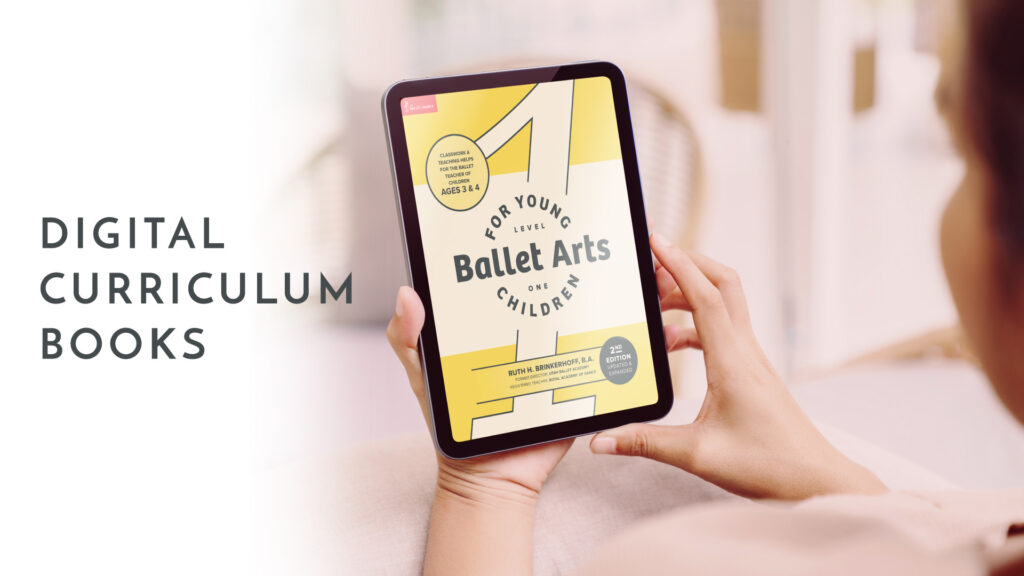Never underestimate the power of planning ahead.
Being a teacher means you must be 100% present with each class that you teach so that your students receive the best possible instruction with each passing week. In my early years, I didn’t understand just how important it was to take the extra time necessary to plan for and anticipate a successful classroom experience. These four tips can make a world of difference in the execution of your class and all the planning it involves.
The Must-Haves for Classroom Preparation
When I think of “doing lesson plans”, I think of sitting down for 1 to 2 hours each day and planning out each of my evening’s classes step by step. Sometimes, especially as the students get older and begin to branch out more advanced steps, it is necessary to plan a new barre and new center exercises on a regular basis. However, I must stress that, with our young ones, repetition and classroom structure are the most important tools they need to learn (See “Why ‘Changing It Up’ May Not Always Be Best”). In reality, “lesson planning” doesn’t have to be as tiresome and time-consuming as we may think. The key is to have a well thought-out curriculum plan that gives quarterly suggestions for classwork that include a lot of repetition.
So, how can I properly prepare for each class?
1. Arrive early.
As a young teacher, it always seemed so difficult for me to arrive early. One year, I asked myself, “Why is it so hard?” When I took the time to plan my day a little better and make my arrival time at least 15 minutes before start time, it made such a difference for me!
Being able to go into my empty classroom, turn on lights and fans, set up my iPad, check sound, put spots on the floor, put on my shoes and do a little deep breathing before class has made each day so much more enjoyable. It creates a feeling of calm, and it makes me feel like I am in control right from the get go.
2. Have your classroom ready before the students arrive.
Yesterday, since I had arrived early, I remembered that I wanted to use some scarves in one of my activities. I had never used the scarves at this particular studio before, so I didn’t know where to find them. Without any rush or panic, I simply tracked down someone to help me and I was able to gather all the scarves that I needed before any of my students had arrived. It looks pretty bad to have parents bringing their children into an empty classroom. Instead, I was there, scarves set in the proper place, and it was not yet time to start class.
I had some time to go over my lesson plan and made sure that I had all the props I needed. I could plan out whether I needed to put circle spots on the floor as well as center spots. I counted out my students and made sure the spacing of spots was appropriate. It may be that classes before you have left things out (like tumbling mats, trash, or other props that were not put away), so now you have the chance to make sure the room is neat and tidy.
It’s also very important to check the temperature of the room. Little muscles need to have a nice warm room, so adjust the thermostat as necessary to provide the best environment for your dancers.
3. Open the door and greet each student.
Small children really like to run, full speed, into the big, open classroom, happy and excited to see you. As sweet as this is, it should not be allowed. Keep the door closed until about 2 minutes before class should start. Open the door when you have everything ready to go for class. Don’t let the kids outside rush you. Remember, you are the teacher, and you are in charge.
As they come in, kneel down to get on their level and greet each one with a warm, “Hello!” and a smile. Guide little ones to put their belongings in the appropriate place and help them get themselves ready to begin class. The students who are ready should wait patiently and quietly on their respective spots on the floor until the teacher begins class. They may have trouble with this at first—their urge to run around is very strong—so be sure to firmly guide them through what is expected of them.
4. Be sure to have a lesson plan.
Though it may seem to be a bit of a pain, be sure to briefly review each thing you are planning to teach them today and make sure that you are following a syllabus with quarterly lesson plans. Ruth Brinkerhoff’s curriculum has lesson plans with activities split up over four quarters so that, in the course of the year, you will have taught them all of what is contained in each level of curriculum, or nearly so. This gives you the freedom to focus on your students instead of just finding ways of filling the time until it’s time to go home.
Each of these tips have helped me tremendously to create a calm, disciplined atmosphere in my classroom. To have a plan and arrive early seem like no-brainers, but I have been surprised to see how many teachers teach their classes on a whim, teaching whatever they feel like doing in the moment. Let’s make a plan for success. Our students deserve it.
Related Articles
- Planning from a Bird’s Eye View
- Organizing and Running a “Happy Class”
- 20 Ways to Create a Comfortable Class
- Planning Your Lessons


Comments
No comments for this post.
Add Comment